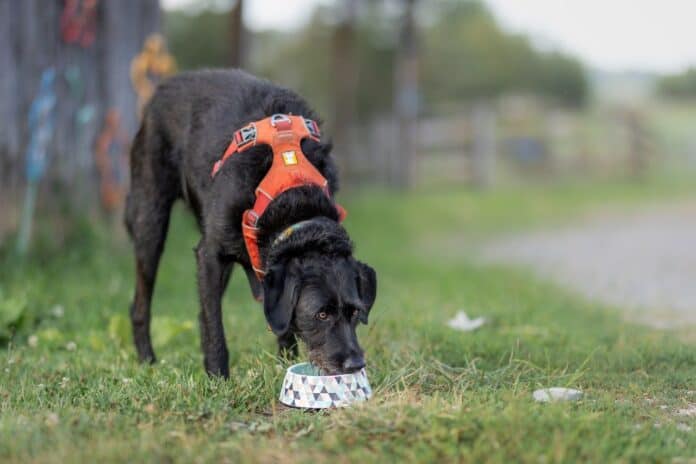Dogs drink water wherever they happen to find it — a puddle, a pond, a toilet. But the stuff in their actual water bowls almost always comes from the same tap their owners use. When that water is contaminated, both dogs and humans may suffer.
The risk is especially high for the 15 million American households that rely on private wells, according to a new Virginia Tech study in the journal PLOS Water. In dog drinking water sampled from wells across the country, 64 percent contained excessive levels of at least one potentially toxic heavy metal, such as lead, iron, sulfur, or arsenic.
Whatever’s in the water is likely in your dog, too.
That’s the conclusion reached by the transdisciplinary trio of faculty members who collaborated on the study:
- Audrey Ruple, the Metcalf Professor of Veterinary Informatics
- Marc Edwards, University Distinguished Professor and professor of civil and environmental engineering
- Leigh-Anne Krometis, professor of biological systems engineering and Turner Faculty Fellow
“Dogs have historically been sentinels for heavy metal contamination in prior drinking water crises,” said Edwards, who cited not only the Flint, Michigan, water crisis that he’s well known for investigating, but also instances in Vermont and Massachusetts when a dog’s illness presaged lead poisoning in the pet’s human owners.
Sharing the same environment as their owners makes dogs a kind of “canary in the coal mine.” Their smaller sizes and shorter lifespans mean environmental toxins often affect dogs before they affect humans.
What’s different, Ruple said, is “they’re not sacrificial sentinels. With our dogs, we care deeply about the way that the environment is impacting their life, their health, and their longevity. And we can do something about it.”
Private wells pose hidden risks
As a member of the executive leadership team of the longitudinal Dog Aging Project, a multi-institutional project, Ruple has access to over 50,000 dogs that registered to participate. For this study, she invited a small selection of dog owners with wells to mail in samples of the water their dogs drink.
Why focus on well water? Municipal water must be tested regularly and meet federal standards, but private wells fly under the regulatory radar. In Virginia, 40 percent of well owners have no water treatment system at all, according to recent research by Krometis. “It’s a big unknown risk sitting in your house,” she said.
Because heavy metal contaminants are often tasteless, odorless, and invisible, homeowners may not know there’s something in the water — until their dog gets sick. “Dogs living in these homes may be our first warning signs of environmental exposures in underserved rural areas,” Ruple said.
Water treatment systems make a difference
By comparing the results of water testing with existing data on the dogs’ health conditions, researchers identified some indicators that heavy metals may already be making dogs sick.
For instance, dogs whose drinking water was treated only with a sediment filter were more likely to have a diagnosed health problem, while dogs drinking well water treated by reverse osmosis were the least likely to be in poor health.
Future research will need to validate that correlation, but it’s already clear that wells using some health-based treatment systems can reduce heavy metals.
Protecting dogs helps protect people
Researchers urged households with well water to test and treat it. The Virginia Household Water Quality Programsponsored by Virginia Cooperative Extension offers free water testing throughout Virginia. “Knowledge is power and peace of mind,” said Krometis.
Dog owners are often quick to act when their pets’ health is at risk. When researchers told some study participants that their pet’s water showed elevated levels of arsenic, they immediately acted to mitigate the risk by treating their water.
“We care what happens to our dogs,” Ruple said. “We try to fix the environment for them too, not just for us. It highlights the strength of the relationship that we have with them. And I’m not just saying this because I am a dog person.”
Additional contributors to the study
- Courtney L. Sexton, postdoctoral associate in the Department of Population Health Sciences
- Janice O’Brien, Ph.D. student in the Department of Population Health Sciences
- Justin Lytle, senior in the Department of Biological Systems Engineering
- Sam Rodgers, MPH graduate of the Department of Population Health Sciences
- Amber Keyser, University of Washington
- Mandy Kauffman, University of Washington
- Matthew D. Dunbar, University of Washington
By Melody Warnick


